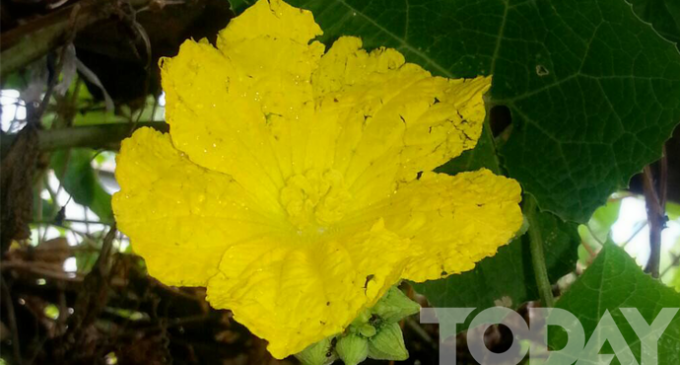Khawe, the designated flower of the month “Tazaungmon”

Tazaungmon (November) is the 8th month of Myanmar lunar calendar and it is the first month of Myanmar cold season called in Pali “Heiman” lasting four months -Tazaung-mon (November), Nattaw (December), Pya-tho (January) and Tabodwe (February).
Myanmar is a tropical country rich in biodiversity. Although flora and fauna of different variety thrive in all three seasons Heiman (cold season), Geinman (warm season) and Wathan (wet season monsoon) specific flower has been traditionally designated as the flower of each month of the 12 months of the calendar.
There are two rhymed quatrains com-posed by an unknown poet in days of yore, so that one can easily memorize the desi-gnated flowers of the 12 months. The two rhymed quatrains run as follows:
1. Gantgaw, golden champac
Jasmine, Ingyin, Kattar
Yinmar, Lotus, Khawe.
In snow showers.
2. Thazin orchid, Clematis,
Pauk, Lei, Ponnyet,
Tharaphi, sweet and Fragrant.
Khawe is a creeper plant that grows wild in all parts of the country. In the month Tazaungmon, it blooms and fruits. Khawe blooms are tender yellow flowers with sweet nectar and yellow pollen attracting all winged creatures to take its sweet juice and pollen. Bees, wasps, butterflies, all kinds of ants and little birds vie to feed on them. In Tazaungmon, the countryside is a natural land-scape of green and yellow hues. Lift up a bush of yellow blooms, you are sure to find Khawe fruits dangling underneath. Rural people gather them for their vegetable meal. Tender leaves are also gathered for making soup.
Khawe is also cultivated in the backyards of rural houses. Or they are cultivated on a large scale on farmlands or sandbanks. Shelves or poles of bamboo are set on which Khawe creepers come up and spread their leafy, flow-ery and fruity vines covering the entire shelves or poles.
So pleasant to go and walk under shelves of Khawe creepers in Tazaungmon, the peak of its season. You are immediately refreshed by the verdant Khawe foliage, faint fragrance of yel-low blooms and sweet juices of Khawe fruits.
Khawe is of two types: Khawe Cho and Khawe Khar. The former is much demanded because of its tenderness, tastiness and flavour. The latter is only used for medicinal purpose, because it is slightly bitter. Myanmar herbalists have a variety of formula for making traditional medicines with Khawe Khar.
Both wild and cultivated Khawe leaves and fruits are available in any early morning bazaar, every where in the country. Wild Khawe fruits are small and short whereas the cultivated ones are larger and longer.
Please be sure to ask the seller of Khawe fruits whether her Khawe fruits are sweet or bitter. She will confirm what she says to you by breaking a Khawe fruit and let you taste it first. But some culinary artists can turn bitter Khawe into a delicious dish.
Sithu Dr. Khin Maung Nyunt
./wp-content/uploads/2018/10/Emirate-Online-TDY.png)



















There are no comments at the moment, do you want to add one?
Write a comment